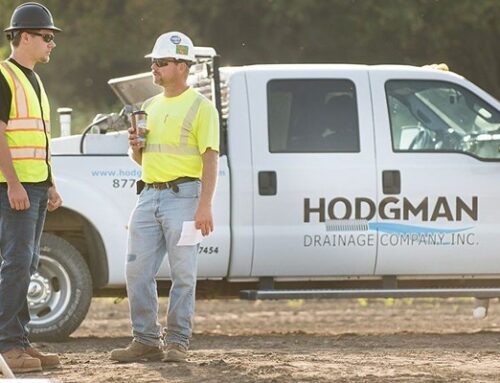Is your newly purchased farmland holding too much water? Have you noticed soggy soil, patchy crops, or water pooling in places it shouldn’t? Efficient drainage isn’t just about convenience—it’s about protecting your soil, crops, and long-term profitability.
Proper planning for agricultural drainage in MN is one of the smartest steps you can take as a new landowner. Whether your property is prone to heavy rains or has naturally slow-draining soil, the right drainage solution can significantly improve productivity and land health.
Why Agricultural Drainage Matters
Without proper drainage, water can linger on the surface or saturate the root zones of crops, creating ideal conditions for diseases, nutrient loss, and even delayed planting seasons. This is where well-thought-out agricultural drainage in MN becomes essential.
Installing subsurface tile drainage or surface systems helps regulate the water table, reduce compaction, and improve soil aeration—all critical for crop growth.
Step-by-Step Planning for Agricultural Drainage in MN
Whether you’re starting from scratch or improving existing infrastructure, here are the key planning steps to take:
Assess Your Property’s Natural Drainage
Start by observing how water moves and collects on your land. After a rainstorm, take note of low spots, standing water, and areas with visibly compacted soil. These visual clues will help guide where drainage is most needed.
Understand the Soil Type
Different soils have different water retention and drainage capabilities. Sandy soils may drain too quickly, while clay-heavy soils retain water. Testing your soil composition helps determine the best system for your land. In agricultural drainage MN projects, clay-based soils often require a more structured subsurface drainage system.
Consider Crop Needs
Some crops tolerate wetter conditions better than others. If you’re planting corn, soybeans, or wheat—everyday staples in Minnesota—you’ll likely benefit from lower water tables and improved root development that proper drainage enables.
Work with Drainage Experts
Agricultural drainage is a long-term investment. Working with local professionals specializing in agricultural drainage in MN can help you avoid costly mistakes. They’ll consider slope, water movement, soil data, and crop planning to develop a customized system for your property. These experts can also help comply with any agriculture drainage regulations and permits that may be required, ensuring you’re working within the law.
Also Read: How to Choose an Agricultural Drainage Contractor for Your Farm | Ag Drainage Company in Fargo
Long-Term Benefits of Agricultural Drainage in MN
The long-term gains of proper agricultural drainage planning are hard to ignore:
- Earlier planting dates
- Better seed germination
- Improved soil structure and root development
- Reduced soil erosion and compaction
- Increased crop yield consistency
Hire Professionals for Agricultural Drainage Installation
Although ag drainage refers to the broader planning and water management strategy, the drainage installation process is critical to its success. Installation involves multiple steps that only an experienced professional can handle efficiently.
Hodgman Drainage Company Inc. provides professional drainage installation services to help maximize the benefits of agricultural drainage. With years of experience and expertise, our team ensures a thorough installation process that addresses all necessary factors for optimal results.
We begin with a comprehensive evaluation of the land and soil conditions to determine the type and layout of the drainage system that best suits the area. Our drainage experts then design and install a custom drainage system that removes excess water, allowing crops to thrive. Contact us today.



